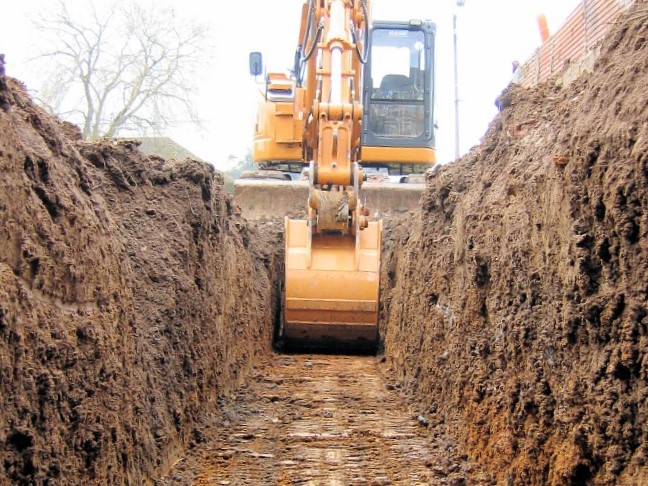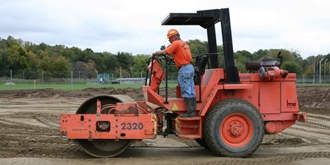Specialist Septic Ohio - Relied On Septic Tank Specialists in Ohio
Specialist Septic Ohio - Relied On Septic Tank Specialists in Ohio
Blog Article
In-Depth Exploration: The Science Behind Superior Excavation Practices
From old hand devices to modern-day hydraulic excavators, the advancement of excavation techniques has been a testimony to human resourcefulness and technical improvements. What genuinely establishes remarkable excavation methods apart is a deep understanding of geological concepts, combined with the use of innovative devices and techniques.
Development of Excavation Techniques
Throughout history, the evolution of excavation strategies has actually played an important duty in advancing building practices and archaeological explorations. From the rudimentary devices used by our forefathers to the advanced equipment used in contemporary times, the progression of excavation methods has actually substantially transformed just how we approach various tasks.
In old times, hand-operated labor with basic tools such as shovels, wheelbarrows, and pickaxes was the primary approach of excavation. This labor-intensive procedure limited the depth and extent of excavations, often resulting in slow development and restricted accessibility to specific sites. As civilizations advanced, so did the strategies and tools made use of for excavation.
The Industrial Transformation marked a turning point in excavation methods with the intro of steam-powered machinery. In modern times, innovation plays an essential duty in excavation, with improvements like GPS systems, drones, and 3D scanning boosting accuracy and effectiveness in the area.
Function of Modern Technology in Excavation

The integration of sophisticated technology has actually basically reinvented the area of excavation, improving accuracy and efficiency to extraordinary levels - lancaster trenching. One of the crucial technical developments that has considerably affected excavation practices is the usage of General practitioner systems.
In addition, the development of 3D modeling and simulation software has streamlined the preparation procedure for excavation projects. Drivers and engineers can now imagine the entire excavation procedure prior to breaking ground, maximizing and recognizing potential challenges process. Together with this, the implementation of drones in excavation tasks has actually promoted aerial surveys, volumetric measurements, and site assessments with unequaled speed and accuracy.
Geological Principles in Excavation
An understanding of geological principles is essential for ensuring the architectural stability and stability of excavation websites. Geological aspects play an important duty in establishing the expediency and safety of excavation tasks.
In addition, the geological structure of the location, consisting of faults, cracks, and rock developments, should be meticulously examined to identify possible dangers and challenges. Excavating near geological fault or unstable rock developments can result in instability and possible dangers. By conducting detailed geological studies and analysis, designers and excavators can establish strategies to alleviate risks and make certain the successful conclusion of excavation tasks. Eventually, including geological principles right into excavation practices is important for attaining secure, reliable, and lasting results.

Latest Tools for Excavation
In the realm of excavation practices, modern developments in tools have revolutionized the efficiency and accuracy of excavation processes. These drones can provide comprehensive aerial studies of excavation websites, providing real-time data on topography and prospective risks.
Another cutting-edge device acquiring learn the facts here now popularity is the execution of 3D printing innovation for creating personalized excavation devices. This allows for the manufacturing of specialized devices that are tailored to the specific needs of a job, increasing efficiency and decreasing downtime.
In addition, improvements in materials scientific research have caused the development of more powerful and more long lasting excavation tools. lancaster excavation. Tungsten carbide-tipped excavator add-ons, for instance, offer premium performance in tough ground conditions, improving performance on-site
Science's Influence on Excavation Practices

In addition, innovations in materials science have actually resulted in the creation of more powerful, a lot more durable excavation devices and devices. As an example, making use of composite materials in miners and try this website shovels has boosted their performance and long life, eventually increasing performance on excavation sites. In addition, scientific study on soil auto mechanics and geotechnical engineering has actually provided useful understandings into dirt behavior, permitting excavation professionals to make educated choices relating to excavation methods and soil stablizing techniques. Generally, scientific research remains to drive technology and improvement in excavation techniques, making excavation projects a lot more reliable, affordable, and lasting.

Conclusion
Finally, the evolution of excavation strategies has actually been considerably influenced by advancements in modern technology and a much deeper understanding of geological principles. The most up to date devices and tools utilized in excavation have improved efficiency and accuracy in the area. The application of clinical knowledge has significantly boosted excavation methods, leading to much more lasting and reliable techniques for excavating numerous kinds of materials.
In the realm of excavation practices, modern technologies in devices have actually reinvented the effectiveness and precision of excavation procedures. By leveraging clinical principles, the excavation industry has been able to dramatically boost performance, precision, and safety in excavation processes. GPR permits excavation teams to non-invasively scan and map subsurface frameworks, energies, and prospective hazards, allowing them to prepare excavation projects with greater look at this now accuracy and decreased risk of crashes.
Furthermore, scientific study on dirt mechanics and geotechnical design has actually provided beneficial understandings into dirt habits, allowing excavation specialists to make educated decisions relating to excavation techniques and dirt stabilization techniques. Generally, science proceeds to drive development and improvement in excavation techniques, making excavation jobs more reliable, economical, and sustainable.
Report this page